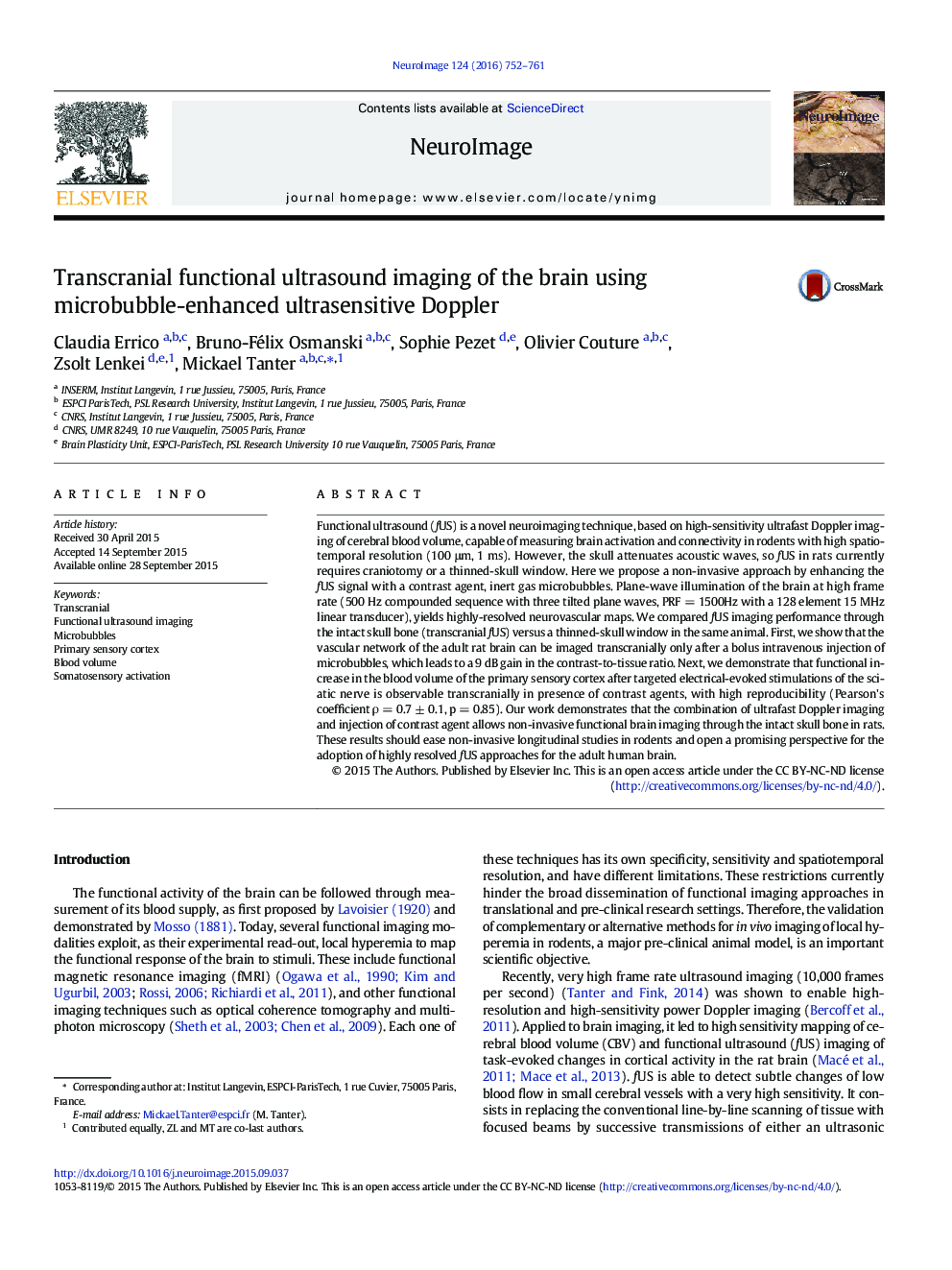| Article ID | Journal | Published Year | Pages | File Type |
|---|---|---|---|---|
| 6024373 | NeuroImage | 2016 | 10 Pages |
Abstract
Functional ultrasound (fUS) is a novel neuroimaging technique, based on high-sensitivity ultrafast Doppler imaging of cerebral blood volume, capable of measuring brain activation and connectivity in rodents with high spatiotemporal resolution (100 μm, 1 ms). However, the skull attenuates acoustic waves, so fUS in rats currently requires craniotomy or a thinned-skull window. Here we propose a non-invasive approach by enhancing the fUS signal with a contrast agent, inert gas microbubbles. Plane-wave illumination of the brain at high frame rate (500 Hz compounded sequence with three tilted plane waves, PRF = 1500Hz with a 128 element 15 MHz linear transducer), yields highly-resolved neurovascular maps. We compared fUS imaging performance through the intact skull bone (transcranial fUS) versus a thinned-skull window in the same animal. First, we show that the vascular network of the adult rat brain can be imaged transcranially only after a bolus intravenous injection of microbubbles, which leads to a 9 dB gain in the contrast-to-tissue ratio. Next, we demonstrate that functional increase in the blood volume of the primary sensory cortex after targeted electrical-evoked stimulations of the sciatic nerve is observable transcranially in presence of contrast agents, with high reproducibility (Pearson's coefficient Ï = 0.7 ± 0.1, p = 0.85). Our work demonstrates that the combination of ultrafast Doppler imaging and injection of contrast agent allows non-invasive functional brain imaging through the intact skull bone in rats. These results should ease non-invasive longitudinal studies in rodents and open a promising perspective for the adoption of highly resolved fUS approaches for the adult human brain.
Related Topics
Life Sciences
Neuroscience
Cognitive Neuroscience
Authors
Claudia Errico, Bruno-Félix Osmanski, Sophie Pezet, Olivier Couture, Zsolt Lenkei, Mickael Tanter,
